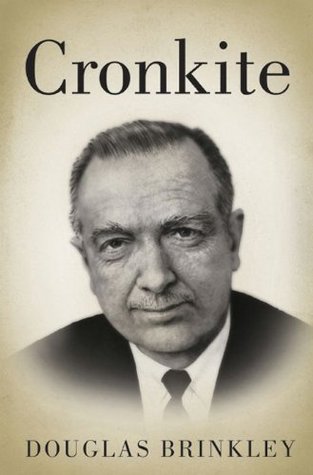More on this book
Kindle Notes & Highlights
Read between
February 7 - February 24, 2022
Cronkite had mastered the intentional pause, the need for frozen seconds of long silence at certain historic moments.
Cronkite trained himself to speak at a rate of 124 words per minute in broadcasts so that TV viewers could easily absorb the newscast. Americans typically average about 165 words a minute, and hard-to-understand speakers average 200.
The genius Cronkite showcased was the steadfast ability to reassure millions of TV viewers, in a manner at once authoritative and convincing, that no matter what, they could depend on him to calm the waters and convey the truth.
It was the assassination of President John F. Kennedy, Friendly believed, that turned Cronkite into this patriarchal figure for millions of TV watchers.
Upon graduating from San Jacinto High in May 1933, Cronkite went on a road trip in a late-model Dodge with Houston buddies to the Chicago World’s Fair (officially, “A Century of Progress International Exposition”). The fair’s motto was “Science Finds, Industry Applies, Man Adapts,” and it was held on 427 acres on the Near South Side of Chicago, along Lake Michigan.
In 1909, when Theodore Roosevelt was president, there were 2,600 daily newspapers operating in America. By the time Franklin Roosevelt was in the White House during the Great Depression, that number had been reduced to 1,750. An argument can be made, in fact, that the wire service led to many cities no longer having competing newspapers. To the detriment of America, news was getting streamlined into two main pipelines: UP and AP.
What disturbed Cronkite the most at Nuremberg, what gave him nightmares for the rest of his life, were the films showing the Dachau death camps. According to Nazi criminals at Nuremberg, the prison was for political dissenters, habitual criminals, and religious fanatics. Cronkite practically vomited after seeing the “showers” (gas vents) in which cyanide powder was used to kill Jews. “As soon as the defendants saw the pictures, the film of the concentration camps, they began to whiten,” Cronkite recalled. “As a matter of fact, several of them cried. They weren’t crying, I don’t think, for the
...more
The rise of Cronkite as America’s first TV anchorman had started in 1951 under Sig Mickelson, the first president of CBS News.
Within the TV context, a running debate ensued over who coined the term anchorman. Sig Mickelson and Don Hewitt both made claims. But, in truth, the label had been applied to other, less successful news presenters before being famously applied to Walter Cronkite. Mickelson had indeed thought about using the term when Cronkite was CBS’s host for the 1951 San Francisco conference that yielded the Treaty of Peace with Japan. But the dynamic didn’t feel right. “I am not sure if that term was ever used in radio,” Mickelson recalled. “But the concept was definitely in place. The way it got some
...more
Cronkite didn’t realize, as he relocated from Washington, D.C., to New York, that the goldfish bowl was also a shark tank. The word around CBS was that Murrow was dismissive of Cronkite’s quick ascendancy at the network. “On the air Murrow treated Cronkite with collegiality,” radio broadcaster Bob Edwards explained, “but off the air, with condescension.”


